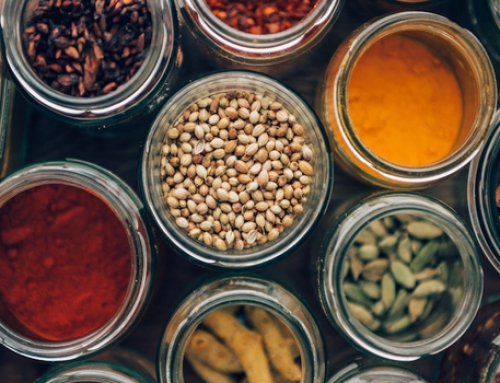As someone who has dealt with chronic pain for as long as 20+ years, being able to alleviate the pain being experienced is worth a pocket full of gold. Most people have become accustomed to the over the counter pain relief solutions that can be found in the stores. And for those forms of pills or elixirs, which over the course of time have been found to have minimal to non-life-threatening side effects, they can over time cause conditions that worsen with continued use. (Thinking of the likes of Acetaminophen for example).
Now with the very real possibility of facing shortages on even the most simplest of drugs, we fortunately do not have to rely upon big pharma or any other company to provide us a solution – using herbs for pain relief.
Most people are unaware of the pain-relieving qualities of herbs that are readily available across the United States. You probably have most of these growing near you. With the proper knowledge of which herbs to use and how to use them, you can and should have a free pharmacy growing nearby.
Now, you may think to yourself, where would you begin? Or even if this is probable if you don’t readily have an available source for these herbs or the know-how to grow them…get resourceful and consider asking friends and neighbors to share the seeds with you or join a seed swapping group online. Last result, you can buy them outright, just remember to get the kinds that are heirloom, get them and get started!
You will soon have a medicinal garden that can treat any kind of pain – and all for free.
The best herb to use for pain depends on the type of pain you are experiencing. So, I have grouped these herbs into categories accordingly. Notice that some herbs fall into multiple categories, so they may be more valuable to you, depending on your needs.
Now, this goes without mentioning, but I will. Be in tune with your body. Usually pain is a symptom of something that is imbalanced. If it remains constant, or continual OR becomes acute and taxing please go see our medical professional to get it checked out.
Headaches
 A. Feverfew
A. Feverfew
Feverfew is widely used for the prevention and mitigating migraine headaches. The leaves and flowers are used for this; Take it daily to reduce the frequency and intensity of migraine headaches you are experiencing. For the best results, take feverfew daily. (Again if this condition persists in intensity or in longevity, this could be signs of something more drastic and you should consult your medical practitioner).
Chew 1 to 4 leaves or drink a cup of feverfew tea to an effective headache preventative. Can also be used solely or in conjunction with other pain relieving herbs for the likes of fevers, colds and flu aches and pains.
Feverfew Tea or in a Blend
Ingredients: 1 teaspoon fresh feverfew leaves, torn or chopped into small pieces and 1 cup boiling water. Pour boiling water over feverfew leaves and steep for 5 minutes. Filter out the herbs and enjoy warm.
Other Herbs for Headaches and Migraines: Sweet marjoram, Sassafras, Quaking aspen, White willow, Duckweed, Peppermint and Yarrow.
Tooth and Gums Pain
 B. Clove Oil is Numbing for Skin and Nerve Pain
B. Clove Oil is Numbing for Skin and Nerve Pain
While cloves properly distilled in oil (MCT is the most preferrable) will cost you a few dollars, it is a remarkable pain reliever. It works by numbing the area to which it is applied, which stops the pain. Dilute the oil before using it; it is too strong in its natural form. Smaller quantities go a long way. 2 to 3 drops in a 1/4 cup of warm water and use it as a mouth wash 2 or 3 times daily.
You can also use clove oil topically to prevent any kind of pain from skin irritations, cold sores, stings, and bites. The pain relief lasts for hours, and you can reapply it as needed.
Other Herbs for Tooth and Skin related pain: Aloe, Goldenseal, Green Tea Leaves, Thyme, Turmeric, Witch Hazel.
Joint Pain, Arthritis, Osteoarthritis
 C. Yucca
C. Yucca
Yucca root is a traditional treatment for arthritis pain. It contains anti-inflammatory properties that can prevent the toxins reaching the joint, and reduce the pain caused by arthritis and osteoarthritic conditions. Yucca root can also be used for muscle aches, pains, and joint soreness.
You want to get the most of the Saponin in the root in an extract form either in an MCT oil or in powder.
Yucca Roasted Root
Brew roasted yucca root powder and consume as you would coffee. Some people use a mixture of half coffee and half yucca root. For inflammatory conditions, add turmeric to the yucca for extra anti-inflammatory benefits.
 D. Chickweed
D. Chickweed
Chickweed, is usually taken as a tea or via tincture, and have been found to be an effective remedy for joint pain and arthritis pain. It also relieves the associated inflammation. Chickweed is also useful in a bath or soaking water for pain in the knees and feet.
Chickweed Decoction
Use fresh chickweed whenever possible to make this herbal decoction, which is a tea just steeped longer than you would to make tea. Take one cup of fresh chickweed leaves and 1 pint of water. Bring it to a boil, and add the chickweed leaves. Reduce the heat to simmer and let it steep for 15 to 20 minutes with a lid on top of the pan you have used. Strain and ingest. Or if you are needing it more quickly, make a traditional tea using 1 teaspoon of the dried herb or 1 tablespoon of fresh chopped chickweed. Pour 1 cup of boiling water over the leaves and cover it while it steeps for 10 minutes. Strain the leaves and consume the entire cup for pain relief.
 E. Copaiba for Achy Muscles and Joints
E. Copaiba for Achy Muscles and Joints
Copaiba is derived from the Brazilian tree’s resin and its balsams and leaves as well. It contains large amounts of beta-caryophyllene which interacts with the endocannabinoid CB2 receptors in your body that then releases beta-endorphins. This can be used best in an oil infusion (MCT or Essential).
It is also an anti-inflammatory and antioxidant and is generally safe to use externally as well as internally. You can add two drops to your favorite water, juice or tea and ingest it at least 2x each day.
A small amount regularly used over achy muscles, and painful joints will relieve pain and reduce inflammation. Maximum results are felt within a few days of regular use.
Copaiba Massage Oil for Painful Muscles and Joints
Add 2 to 3 drops into a healthy dab of your favorite moisturizer and apply it over the area where you are feeling the joint or muscle pain and let it absorb into the skin.
It also blends well for calming effects with Lavender, and Frankincense for an aromatic approach to calm one’s nerves.
 F. Peppermint
F. Peppermint
Muscle aches, joint pains, gout pain, and nerve pain are relieved with peppermint oil extract. The oil is designed to be used only topically or externally in the larger quantities. It is ok, to use internally in the smaller amounts of the peppermint leaves. ‘
Peppermint Oil
Utilize 3/4 cup dried peppermint leaves to 1 cup organic olive oil. Combine the peppermint leaves and the oil in a glass jar with a lid that seals. Warm the peppermint leaves in a carrier oil to release the beneficial oils. Then, shake daily and keep the infusion in a dark cupboard for 4 to 6 weeks. , then strain out the herb and store it in a cool dark place for up to one year.
Massage the extracted peppermint oil into the sore muscles or on the skin above joint pains and nerve pain. It does not treat the underlying causes of the pain, but it does a quick job of relieving the pain.
Peppermint Tea
Ingredients: 7 to 10 fresh peppermint leaves or 1 teaspoon dried peppermint, 1 cup boiling water, and honey, milk, or lemon to taste.
- Crush the fresh peppermint leaves or crumble the dried herbs.
- Remove the boiling water from the heat and allow it to cool slightly. Pour the hot water over the tea leaves.
- Let the tea steep for 7 to 12 minutes. Add honey, lemon, or milk to your taste.
 G. Feverfew
G. Feverfew
This is so good for pain that we need to mention it twice! Feverfew leaves and flowering heads relieve the inflammation that causes arthritis pain. The herb reduces the associated pain when taken regularly. Take feverfew as a tea daily or take the ground leaves in capsule form. (as described above)
For localized arthritis pain or muscle pain, a poultice made from crushed feverfew leaves placed over the affected area is sufficient. Crush some feverfew leaves (soak them if dried leaves are used) and place them directly over the joint. Cover with a clean cloth to hold them in place. Loosely bind the poultice to the area experiencing the pain. and leave it on for an hour or more time as needed. It relieves the pain and calms the inflammation over the joint.
Other Treatments for Muscle Pain and Nerve Pain: Ginseng for fibromyalgia pain and Valerian root soothes muscle spasms and cramps.
Other Treatments: Joint Pain, Arthritis, Osteoarthritis: Ashwagandha, Prickly Pear, Boswellia, Unicorn Root, Cat’s Claw, Wild Strawberries, Slippery Elm, White Pine and Feverfew.
Stomach Pain, Digestive Pain, and Muscle Pain
 H. Comfrey
H. Comfrey
This herb is incredibly valuable that accelerates healing. Topically for skin and wounds in a compress of the crushed roots and leaves applied directly. Or put into a salve and utilized in that manner. It is an excellent anti-inflammatory and relieves pain, inflammation and swelling in muscles and joints. Using it in s tes id best to alleviate stomach problems, upsets and help heal ulcers.
Be aware to use this for only short periods of time. That long term use is not advised, nor is large dosages.
Comfrey Salve
Get some comfrey root and leaves to fill a pint jar, and gather extra virgin olive oil (1 cup’s worth) and 1/4 cup of beeswax. The roots and leaves need to dry, and be free of excess moisture. This can be done in an oven on very low heat for a period of time, or dehydrator or in a hot dry space away from the normal pests.2To use it, cut open a leaf and scoop out the gel inside. Eat 2 tablespoons of the gel in the morning on an empty stomach and before meals.
Once sufficiently dry crush and chop up to a fine powder the leaves and roots and place them in the jar with the entirety of the oil. Allow the oil to warm and infuse the contents for 90 or so minutes. Afterwards, let it cool and steep and store it in a cool dark place for 2 to 3 weeks. Once the time has passed, combine the oil and the beeswax in a pot at a 4 to 1 ratio (oil to beeswax). Place it in containers for later use.
 I. Chamomile for Muscle Pain and Digestive Pain
I. Chamomile for Muscle Pain and Digestive Pain
You’ve probably had a cup of chamomile tea at some point, but did you know it is useful for treating digestive pain and muscle soreness? Chamomile tea relaxes the muscles, which relieves the pain. It soothes muscle and body aches.
Relaxing the digestive muscles treats abdominal pain, indigestion, and gastritis. People with Crohn’s disease and irritable bowel syndrome may find that chamomile tea, taken 3 to 4 times daily, relieves the majority of their symptoms.
Chamomile Tea
Ingredients: 2 Tablespoons fresh Chamomile flowers, 2 cups hot water and honey, as desired.
- Rinse the flowers in cool water
- Heat 2 cups water to boiling and take off the heat. Cool slightly.
- Add the chamomile flowers, cover, and steep for 3 to 5 minutes.
- Strain the tea into 2 servings and sweeten with honey, as desired.
Other Treatments for Abdominal Pain: Fennel, Leeks, Dill, Thyme, Bearberry, Bloodroot, Black cohosh, Kudzu, Bayberry, Black walnut, and American Basswood tree.
General Pain Relief
 J. White Willow Bark
J. White Willow Bark
The white willow tree and its bark and leaves have had a long history of use in mitigating pain in the body. In fact, Bayer was built upon the synthesized version of the compounds found in the bark itself. You know it as aspirin. It contains the compound called salicin that is effective in relieving the pain of most types.
It is especially useful for treating headaches, back pain, joint pain, arthritis, and muscle aches.
The bark of the white willow tree, its leaves, and the ash of burned logs are used medicinally. An easy way to relieve pain with white willow is to make a tea from the bark or the leaves.
White Willow Tea
To make 2 cups you need: 3 to 4 teaspoons crumbled white willow bark or dried leaves, 1 cinnamon stick, honey, as desired for flavor and 2 cups water.
- Boil the white willow bark for 5 to 10 minutes,
- Add the cinnamon, turn off the heat and cover the pot. Steep for 20 to 30 minutes.
- Strain the tea through a coffee filter or mesh strainer to remove the bark and cinnamon stick.
- Add honey, if desired.
- Drink up to 4 cups of tea as needed to relieve pain. Pain relief is long-lasting.
 K. Wild Lettuce
K. Wild Lettuce
Wild lettuce is referred to as the “opium” of herbs because it has weak opium-like effects. The white sap that runs thru the plant contains sesquiterpene lactones where older wild lettuce plant has higher volumes of the sap. Used in small doses, it is a very effective pain reliever and a sedative. It does not cause the high associated with opium.
Wild lettuce tincture or tea is an excellent general painkiller for muscle pain, joint pain, and back pain.
Wild Lettuce Tincture
You’ll need a good quality apple cider vinegar and fresh or dried wild lettuce leaves.
- Fill a clean, sterile, glass jar with chopped fresh leaves or use 2 ounces of dried wild lettuce per cup of alcohol or vinegar.
- Cover the herbs with vodka or other drinkable alcohol or vinegar.
- Stir the herbs to remove air bubbles.
- Move the container to a cool, dark place and allow the tincture to steep for 2 to 4 weeks, shaking daily.
- Strain out the herbs and discard. Store in a cool, dark place for up to 5 years.
- Use 2 to 4 ml of tincture three times daily, as needed.
 L. Yarrow Root
L. Yarrow Root
Chewing a piece of fresh yarrow root or yarrow leaves reduces pain and inflammation for tooth and other dental pains as well as other aches that you are experiencing. Yarrow contains salicylic acid, which acts quickly to relieve pain. Use yarrow leaf tea to relieve general aches and pains.
Salicylic acid is a form of the pain reliever found in aspirin.
Yarrow Tea
Add 1 teaspoon of crushed dried yarrow leaves to 1 cup of boiling water. Steep for 3 to 6 minutes, strain and enjoy.
Overall TakeAway
You should do your own research on these herbs before using them. Some have warnings for susceptible people, so it is always wise to analyze them for your individual condition. However, you do not have to rely upon Big Pharma to achieve the pain relief you may be seeking. Hopefully with this information and the pictures of the plants that contain the relief we are looking for, we can better take care of ourselves and well-being.


 A. Feverfew
A. Feverfew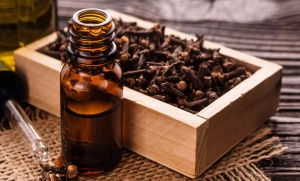 B. Clove Oil is Numbing for Skin and Nerve Pain
B. Clove Oil is Numbing for Skin and Nerve Pain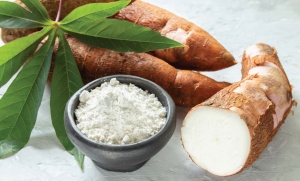 C. Yucca
C. Yucca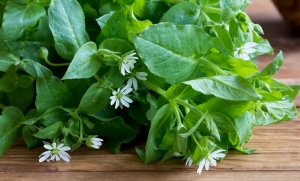 D. Chickweed
D. Chickweed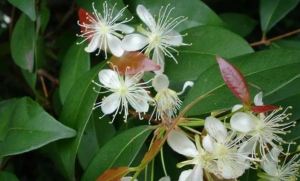 E. Copaiba for Achy Muscles and Joints
E. Copaiba for Achy Muscles and Joints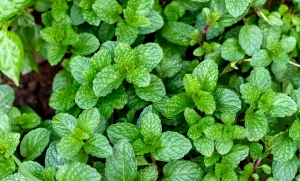 F. Peppermint
F. Peppermint G. Feverfew
G. Feverfew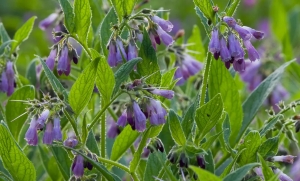 H. Comfrey
H. Comfrey I. Chamomile for Muscle Pain and Digestive Pain
I. Chamomile for Muscle Pain and Digestive Pain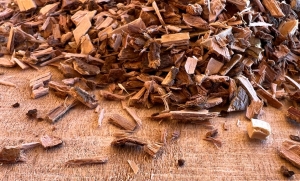 J. White Willow Bark
J. White Willow Bark K. Wild Lettuce
K. Wild Lettuce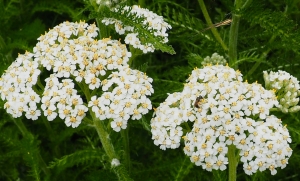 L. Yarrow Root
L. Yarrow Root



